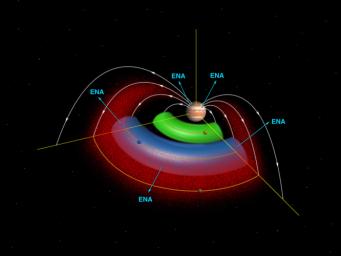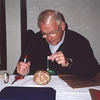A drawing of space near Jupiter, showing a portion of the radiation belts (in red), the Io torus (green) and the Europa torus (blue). The blue and green belts come from the atmospheres of the moons Europa and Io. The picture comes from measurements taken by the Cassini spacecraft.
NASA
The Atmosphere of Europa
The
Galileo mission discovered an amazing thing! Europa has its own atmosphere, although it is very, very thin. When fast moving molecules traveling through space near Jupiter hit Europa's atmosphere, they can bump molecules out of the atmosphere or off it's surface and make them get trapped in a donut-shaped belt called a "torus" around Jupiter.
Even though
Ganymede and
Callisto also have thin atmospheres, they do not seem to produce torii near Jupiter. Scientists think this has something to do with the shape of
Jupiter's magnetic field.
You might also be interested in:
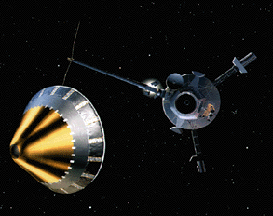
Galileo was a spacecraft that orbited Jupiter for eight years. It made many discoveries about Jupiter and its moons. Galileo was launched in 1989, and reached Jupiter in 1995. The spacecraft had two parts.
...more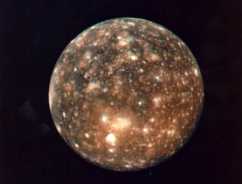
Callisto was first discovered by Galileo in 1610. It is the 2nd largest moon in the solar system, and is larger than the Earth's moon. It is about as big as the distance across the United States. Callisto
...more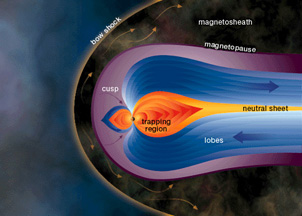
Jupiter's magnetosphere is very special. It is the biggest thing in the entire solar system. Not only is it big enough to hold all of Jupiter's moons, but the sun itself could fit inside. It goes all
...more
Europa was first discovered by Galileo in 1610, making it one of the Galilean Satellites. It is Jupiter's 4th largest moon, 670,900 km ( miles) from Jupiter. Europa's diameter is about half the distance
...more
Galileo is a spacecraft that has been orbiting Jupiter for eight years. On September 21, 2003, Galileo will crash into Jupiter. It will burn up in Jupiter's atmosphere. The crash is not an accident! The
...more
Amalthea was discovered by E Barnard in 1872. Of the 17 moons it is the 3rd closest to Jupiter. Amalthea is about the size of a county or small state. Amalthea is named after the goat in Greek mythology
...more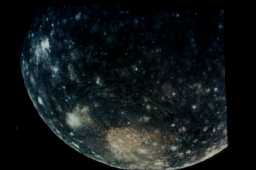
Measurements by the Galileo spacecraft have been shown that Callisto is the same inside from the center to the surface. This means that Callisto does not have a core at the center. This means that, unlike
...more
